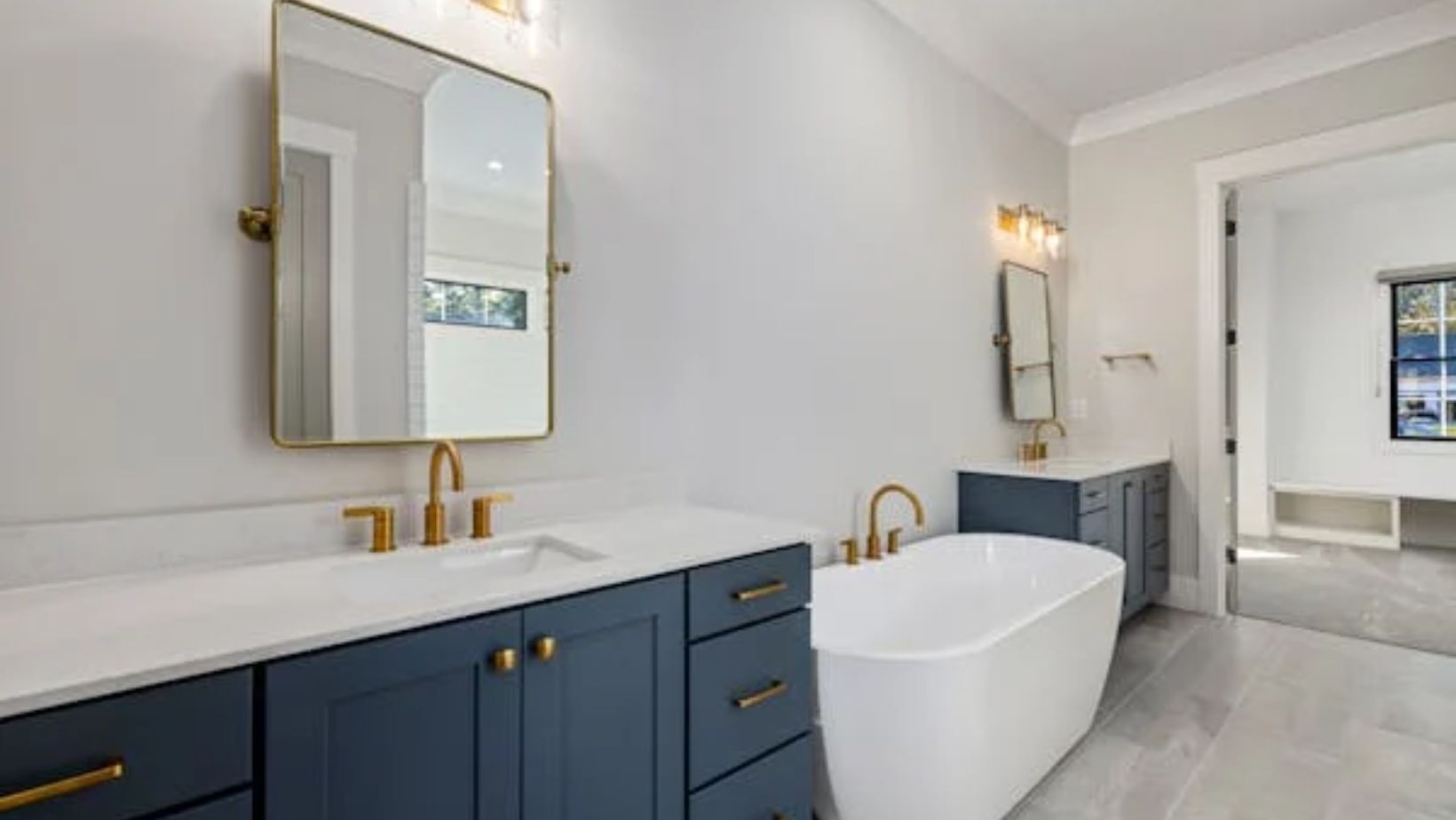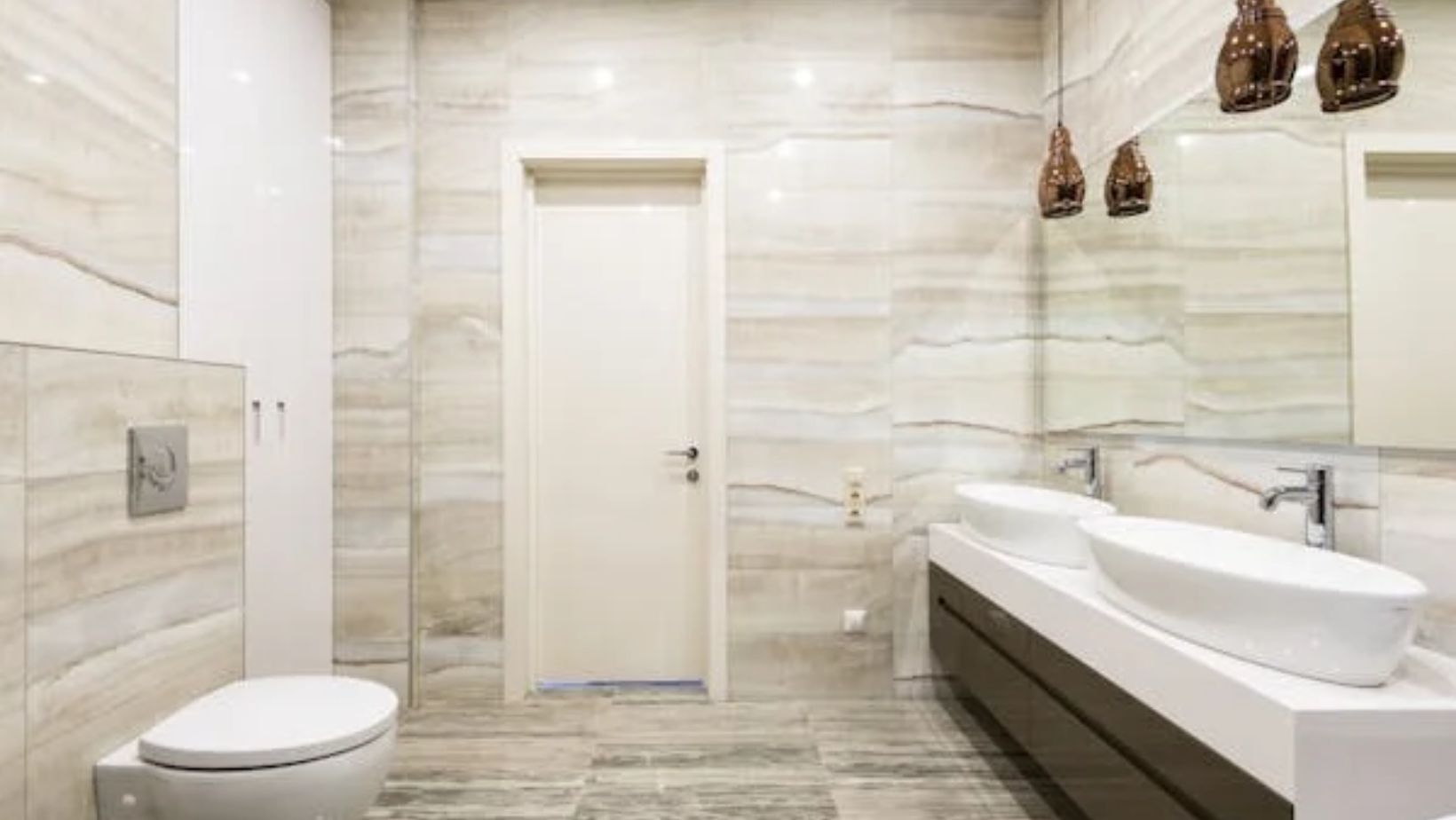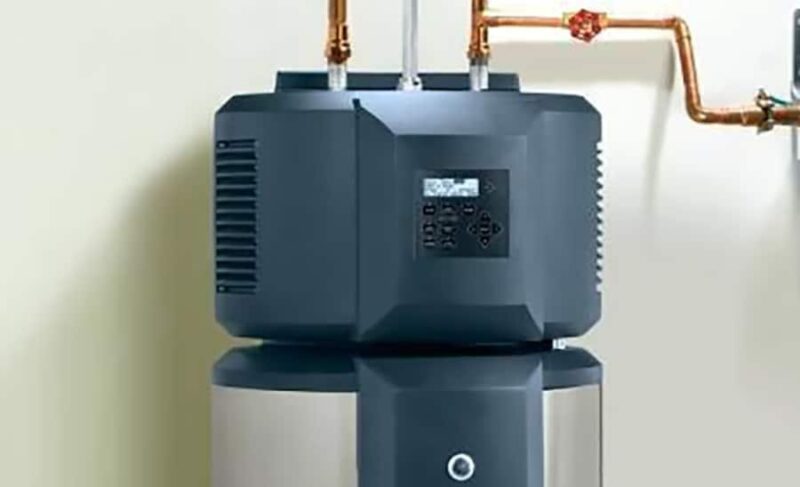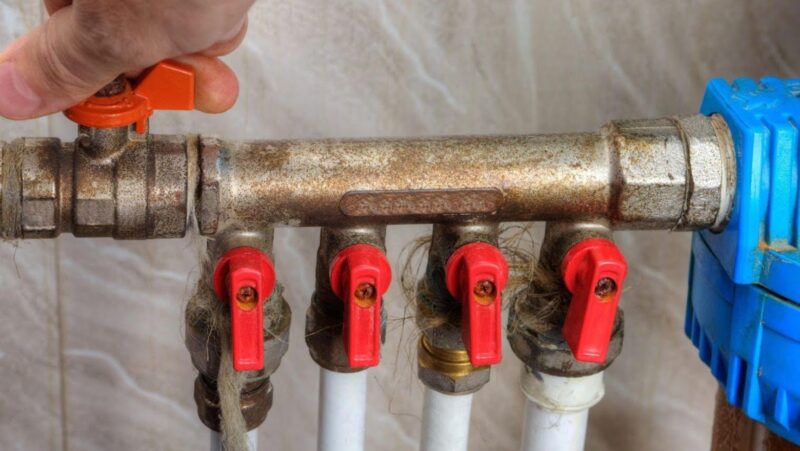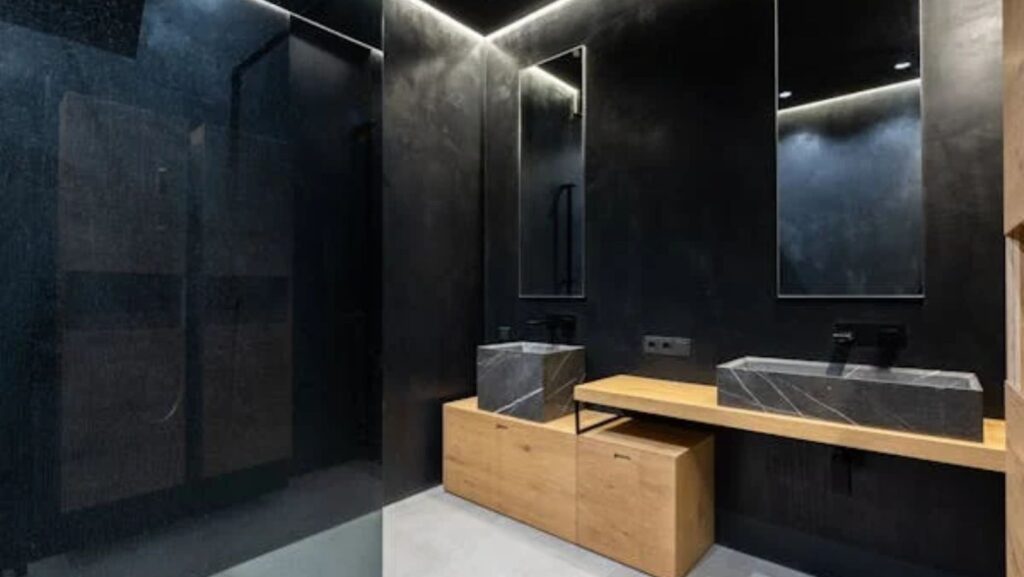
There is much more to a bathroom vanity than just a sink cabinet. You wash your face and hands there, shave, brush your teeth, style your hair, and put on cosmetics. It’s also where you keep all of the tools you need for your everyday activities, along with additional cleaning supplies and bathroom necessities.
It is the most noticeable feature in certain bathrooms. In others, it’s hidden away in a discrete corner. It may be hung from a wall or placed straight on the floor.
In its most basic configuration, the vanity may or may not include doors and drawers and encloses the sink plumbing. Do you have a piece of extra utility shelving or an old dresser? With the right information, these and other unusual choices can be considered modern bathroom vanities, depending on who you ask about the design.
The traditional vanity is a wall-mounted, rectangular cabinet with a sizable open area beneath the sink to contain the plumbing. Doors are usually included to conceal the plumbing, storage shelves, and toiletry drawers.
The bathroom is the most utilized room in the residence, although being among the smallest. Therefore, fashionable amenities are essential to create a welcoming ambiance, regardless of whether you want to stay in your home for several decades to come or make modifications to raise the value of your property for an eventual home sale.
Although amenities like an upscale shower head can have a significant effect, installing a contemporary bathroom vanity is among the greatest improvements you can make to achieve these objectives.
Knowing What “Modern” Furniture Is
Naturally, knowing exactly what is meant by “modern” furniture design is generally helpful before you begin researching contemporary bathroom vanities. Early examples of this design movement date back to the late 1800s.
The elaborate and elaborate furniture that had previously been manufactured was directly replaced by modernism. Rather, craftsmen started concentrating on a more simple style that emphasized practicality.
This design movement was influenced by a number of cultural shifts, chief among them the Industrial Revolution’s introduction of factory manufacturing techniques and the goal to provide high-quality furniture at a lower cost to the masses. Mass production was simpler with a simplistic design.
Functionality is a major factor in the design of modern and contemporary furniture. Just having nice-looking furnishings is insufficient. It must also meet the demands of the user. In the end, this influences everything from the piece’s size to how doors and other elements are included into the overall layout.
Modern furniture designers also aimed to distance their products from the past by emphasizing a sleek, streamlined appearance as part of the overall minimalist approach. The main concept was that instead of trying to establish a connection with the past, the sculpture mirrored the present and future.
Following World War II, industrialization gained even greater traction and new production methods made it possible for new modernist ideas to flourish. Even though modernism has been evolving throughout time, many of the early modern forms that were first presented decades ago are still quite popular today.
Take the revival of “midcentury modern,” which harkens back to designs that were initially popularized in the 1950s. This wouldn’t traditionally be coined as modern, but it is a newly designed type of modern that is recognized by decorators and contractors in the home improvement and design industries.
Since it blends some of the current design elements (https://sparks.learning.asu.edu/videos/elements-and-principles-of-design) that are popular worldwide with the modern principles of utility and simplicity, furniture made today is sometimes referred to as “contemporary” rather than “modern.” Due to regionally specific design influences, current trends frequently vary from one nation to the next.
Modern and contemporary furniture’s sleek, minimalist forms help any space appear less congested, which is ideal for items like vanities that are already intended to assist you. These areas are often full of hygiene products, linens, and other space consuming items, so any design which helps to declutter a space is often a welcome addition to design.
How Do You Describe a “Modern” Vanity?
What, therefore, distinguishes a modern or contemporary bathroom vanity? It is insufficient to be manufactured in 2019. After all, a lot of people still like a more conventional appearance, and a lot of bathroom vanities are being constructed with inspiration from these vintage styles. Even though they were created today, they scarcely fit the definition of modern or contemporary.
Homeowners may find it challenging to determine what constitutes a modern or futuristic bathroom vanity. The fact that the phrases “modern” and “contemporary” are not usually used interchangeably further complicates the selecting process.
In general, contemporary bathroom vanities are a reflection of design movements that emerged from the 1920s through the 1960s. Modern bathroom vanities will make use of more recent design developments from the 1970s until the present.
Installing a Bathroom Vanity: A Guide
A bathroom vanity installation is a somewhat simple do-it-yourself task. Place it where you want it and fasten it to the surface of the wall as well as floor as needed. After that, install the sink, faucet, and piping, and fasten the countertop. All you need to do is add trim and caulking as final touches.
How to Take a Bathroom Vanity Out and Put It Back in
A current bathroom vanity can be removed by unfastening it from the ceiling or floor, disconnecting the plumbing, and then sliding it out of the way. The countertop, sink, and faucet can be taken out later.
If the new flooring has a different footprint, you might need to make adjustments when installing it. Then proceed with the usual installation process.
How to Construct A Vanity in the Bathroom
It is easier to construct a bathroom vanity by buying a ready-to-assemble model and following the assembly instructions. Starting from scratch can make the process more difficult, but creating a plan beforehand makes it much simpler. There are a ton of blueprints and building instructions available online if you’re at a loss for ideas.

